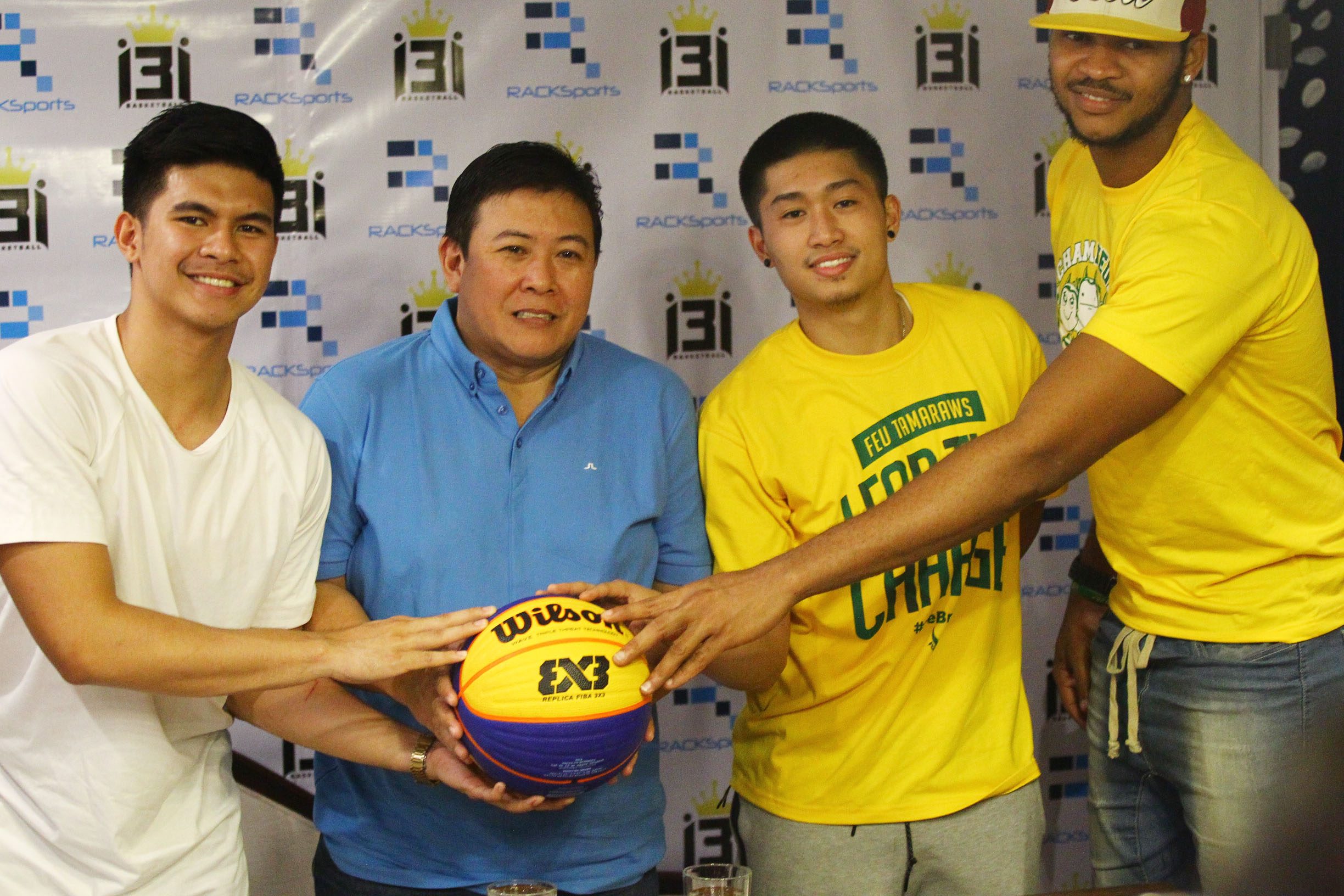SUMMARY
This is AI generated summarization, which may have errors. For context, always refer to the full article.

MANILA, Philippines – Reigning collegiate champions Far Eastern University and Colegio de San Juan de Letran will headline up to 48 teams in the inaugural edition of the Intercollegiate 3×3 Invitationals (i3i) from March 19 to 20 at the Xavier School Gym and the SM Mall of Asia Music Hall, respectively.
Prince Orizu and Jojo Trinidad from UAAP titlist FEU will join hands with Brandrey Bienes and New Zealand native Joseph Nunag for the Tamaraws’ Team A to be handled by assistant coach Ryan Betia.
The Knights, the NCAA’s reigning champions, will be handled by new coach Jeff Napa.
“This is something we’ve long been planning,” said former Ateneo Blue Eagles star Kiefer Ravena, who is serving as tournament director. “We want to show the talents of the college players even more.”
“3×3 is a sport na pang-Pinoy talaga. Pang-masa. Kahit saan tayo makakita lang tayo ng half court sa kalsada, makakabuo ng 3×3 (3×3 is really for Filipinos. For the masses. Anywhere we go, if we see a half court on the streets, we can play 3×3),” added Ravena, who played alongside Jeron Teng, Ola Adeogun, and Bright Akhuetie in the FIBA 3×3 All Stars last December.
“That’s one mission of this group, to really promote grassroots development when it comes to basketball. 3×3 will definitely show and expose the skills of different players.”
The i3i allows each school to field up to 3 teams. The tilt is organized by Rack Sports and is endorsed by the Samahang Basketbol ng Pilipinas (SBP), the country’s basketball federation.
“This is a welcome endeavor,” said SBP deputy executive director Butch Antonio. “It’s a chance to showcase Filipino talent.”
Recruits and transferees from other universities are allowed to suit up in the i3i provided they are currently enrolled in the school they will be playing for.
Winners of the two-day event will bring home cash prizes, with the champions taking P200,000 – half of which will go to their school. The second and third placers will get P100,000 and P50,000, respectively.
Also joining the competition are UAAP runner-up University of Santo Tomas and NCAA finalist San Beda College, along with Ateneo de Manila University, National University, Mapua Institute of Technology, University of the Philippines, San Sebastian College – Recoletos, University of the East, Adamson University, and Arellano University.
Tournament format
The i3i will hold the single round robin eliminations on Saturday among 8 groups of 6 teams each. Every team is guaranteed 5 games for the first round.
The bottom two teams in each group will be eliminated while the top team will gain a twice-to-beat advantage heading into the second round, which will be a crossover between groups and will also take place on Saturday.
The remaining rounds will be in knockout format. The quarterfinals, semifinals, and the finals will all be held on Sunday.
What is 3×3?
3×3 basketball (pronounced 3-on-3, 3 by 3, or simply 3×3) is also known as street basketball and is considered to be the number one urban team sport in the world, based on an IOC-commissioned study.
It is a fast-growing sport that is heavily supported by FIBA, basketball’s world governing body, through events such as the FIBA 3×3 World Tour and the FIBA 3×3 World Championships.
Below are some of the basic rules and major differences from regular 5-on-5 basketball:
- 3×3 is played 3-a-side using just half a court and one hoop.
- A team is allowed to have only 4 members with the extra person serving as substitute.
- It has very minimal if not no coaching at all, as the game is fast-paced.
- The winner is determined via a race to 21 points or whichever team has the higher score after 10 minutes.
- Each basket within the arc is worth 1 point, and anything beyond is worth 2 points.
- The shot clock is at 12 seconds instead of 24.
- Each team is allowed only one timeout.
- In case there is a need for overtime, the first team to score 2 points wins the game.
- If a foul is committed inside the arc, the team will shoot 1 free throw. A foul beyond the arc constitutes 2 free throws.
- Each team is allowed a limit of 6 fouls. There are corresponding progressive penalties for future fouls. The penalty for the 7th to 9th fouls of a team is 2 free throws. The 10th foul and beyond equates to 2 free throws plus ball possession.
- There is no fouling out.
- After every successful basket or made last free throw (except when it is followed by ball possession), a player from the non-scoring team must pass or dribble the ball from underneath the ring (not outside of the court) to a player behind the arc.
- If the shot attempt is missed or if the last free throw (except when it is followed by ball possession) is missed, the offensive team, upon securing the rebound, can go for a follow-up and continue playing the ball. If the rebound goes to the non-scoring or defensive team, they must first pass or dribble the ball to a player behind the arc.
- There is an official FIBA 3×3 ball that is size 6 and is smaller than a regular basketball but weighs the same.
– Rappler.com
Add a comment
How does this make you feel?
There are no comments yet. Add your comment to start the conversation.